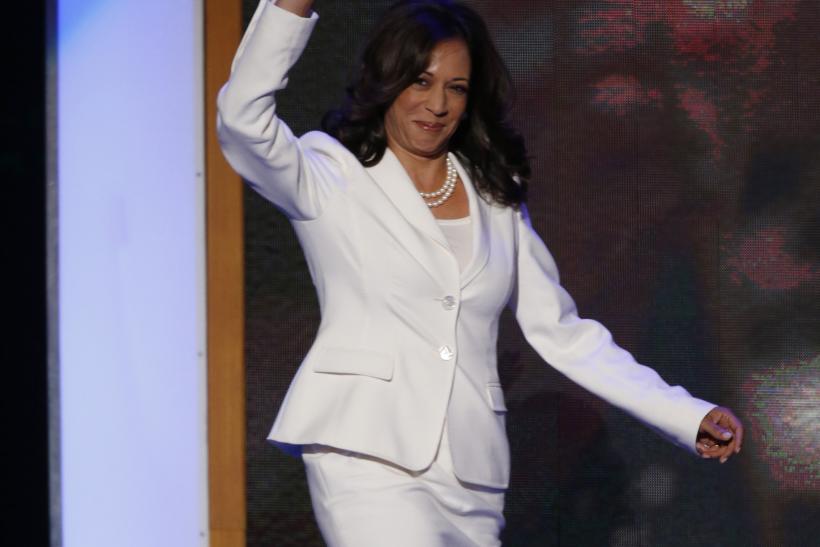Yesterday, presumptive Democratic nominee for President of the United States Joe Biden announced that his running mate for Vice President will be California Senator Kamala Harris. Reactions to the announcement have been mostly positive in her home state, where Harris has been a fixture in state politics for a decade and in the Bay Area for even longer.
She has been assailed on her record on social justice, including for a truancy law she designed as district attorney for San Francisco that was designed to increase attendance in public schools but achieved infamy for incarcerating parents arrested for their children's school absences.
But eight years ago, in the days before Streetsblog California existed, I had the chance to cover California State Attorney General Harris' impact on regional planning. While an in-the-weeds story about urban planning lawsuits is unlikely to make it into Politico, the story does show that Harris may have the experience, and guts, to effectively go after the many environmental protection rollbacks that have occurred in the last three and a half years.
In 2008, the State of California enacted S.B. 375, legislation that attacked the state's growing greenhouse gas emissions by requiring planning agencies to adopt Long Range Plans that aim to reduce sprawl development and encourage alternatives to driving. The first plan adopted by the San Diego Association of Governments (SANDAG) received unenthusiastic support from many advocacy groups (and even a "why can't we do that here" article in Streetsblog Los Angeles) as the best document of its type in California.
But a local San Diego environmental group, the Cleveland National Forest Foundation, objected, charging that it pushed bicycle and pedestrian improvements to the future while embracing building new highway lanes in the short-term.
“If this is a national and regional model, we’re in bad shape,” said the Foundation's director, Duncan McFetridge, to Streetsblog back when the plan was passed in 2011. “We have a need, a tremendous need, for transit right now. Today. This proposal puts funding transit off into so far into the future that many of us won’t be around anymore.”
The Foundation filed suit, but the lawsuit was often just a footnote in media reports extolling the plan. SANDAG responded to it with an expensive PR campaign that included a glowing editorial in the San Diego Union Tribune by three former governors of California from both parties. The governors dismissed the Foundation's lawsuit as "frivolous."
In February of 2012, California's Attorney General, Kamala Harris, announced that her office was joining the lawsuit against the SANDAG plan.
“The 3.2 million residents of the San Diego region already suffer from the seventh worst ozone pollution in the country,” said Harris in a press release at the time. “Spending our transit dollars in the right way today will improve the economy, create sustainable jobs and ensure that future generations do not continue to suffer from heavily polluted air.”
The Harris' move didn't just add legal heft to the Foundation's argument; it also changed the political and media discussion of the SANDAG plan. It was no longer viewed as "progressive" or "good enough," but as an attempt to get around the state's environmental laws.
It certainly was no longer seen as a national, regional, or statewide model. And despite the aforementioned expensive PR campaigns' use of the press and targeting of the AG's office, Harris held firm, and the tide began to turn. (Thanks to the San Diego Free Press for its article on SANDAG's subversion of the public process, and for providing links to the source documents.)
Over the next month, groups continued to attack the SANDAG plan. The original plan had been seen as a model for one being considered for the mammoth Los Angeles/Orange County mega-region, but thanks in large part to the loud blowback against SANDAG, that plan was improved. Even so, transportation advocates and environmental reformers still felt the L.A. plan fell far short of the estimated more than $40 billion need for the region, as calculated by the Los Angeles County Department of Public Health
In December of 2012, after the L.A. plan was passed, Superior Court Judge Timothy Taylor ruled that the San Diego Association of Governments (SANDAG) violated state law by failing to fully account for, and take steps to reduce, climate pollution in its environmental review of the region’s long range transportation plan. San Diegans and environmental groups won a new public outreach campaign for the regional plan, and other regional planning agencies were put on notice that half-baked and deceptive efforts to plan for a car-dominated future in California would not be tolerated.
Of course, the ruling was appealed and it wasn't until 2018, when Harris had been one of California's Senators for years, that the lawsuit was finally settled when the San Diego County Superior Court ordered SANDAG to decertify the plan’s flawed environmental analysis. However, there's little doubt that without Harris' early intervention that outcome would never have been possible.
I support a Green New Deal. Climate change is an existential threat to all of us, and we have got to deal with the reality of it.
— Kamala Harris (@KamalaHarris) January 29, 2019
Harris is a groundbreaking candidate for reasons that are obvious, as both the first Asian-American on a national ticket and the first African-American woman on a national ticket. If she wins, she will be America's first female vice-president. However, she could also hold another "first": she could be the first president or vice-president to truly understand the devastating impact that America's bad planning policies have on communities, particularly communities of color, and the environment.






